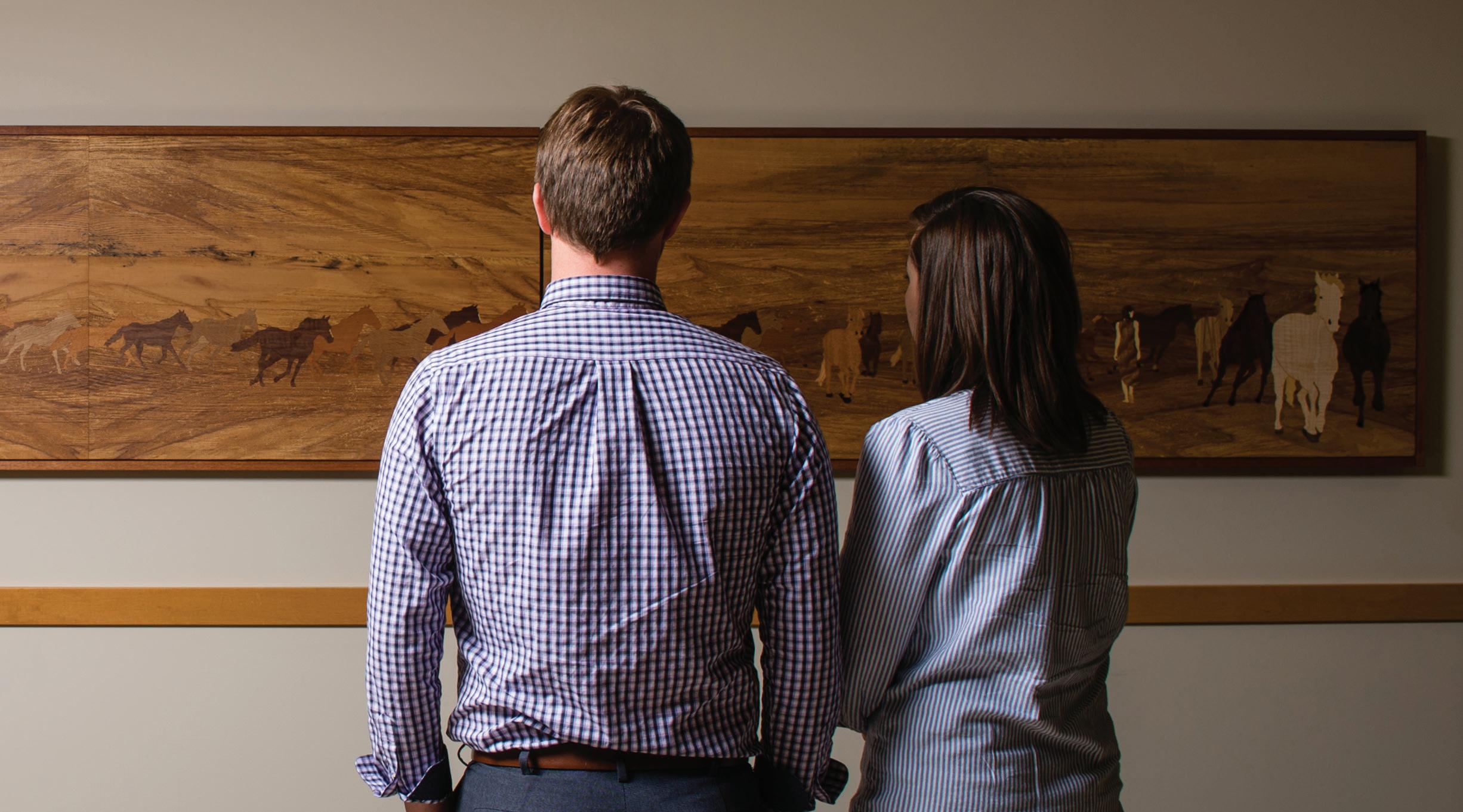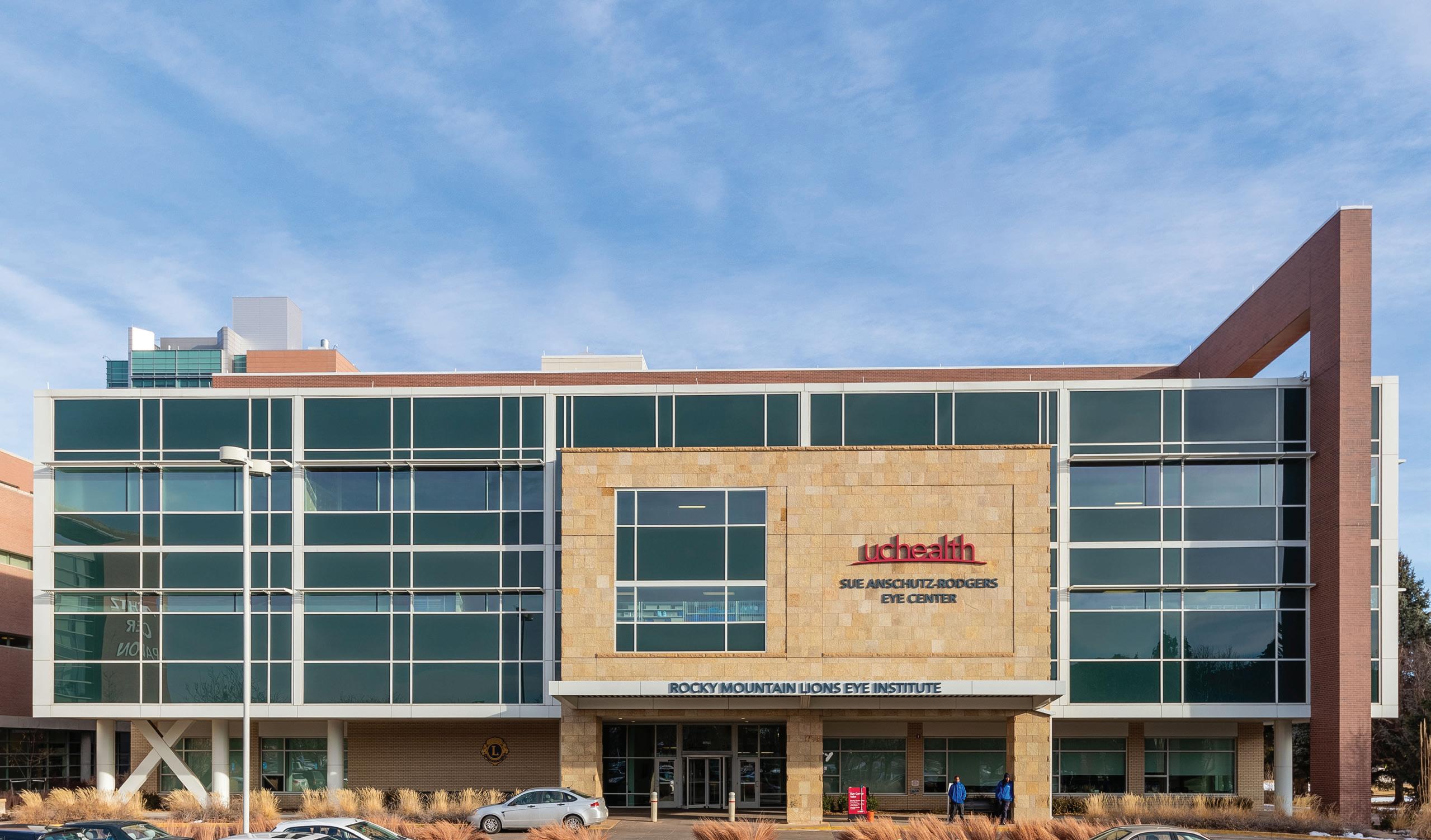
3 minute read
Art Installation Inspires and Promotes Healing
CARE + COMMUNITY
Art Installation Inspires and Promotes Healing

At the CU Anschutz Medical Campus, art and medicine go hand-in-hand. Unique works of art enhance teaching and learning in the schools and colleges, and put patients at ease as they seek world-class health care at UCHealth University of Colorado Hospital and Children’s Hospital Colorado.
In the main lobby of the Rocky Mountain Lions Eye Institute building, home to the Sue Anschutz-Rodgers Eye Center, a new art installation is on display, adding to the center’s reputation as an environment of healing, care and innovation.
“The Anemoi Frieze” is a striking 21-foot-long inlaid wood feature presenting a scene of wild horses galloping across a rolling landscape. The piece’s namesake is the “Anemoi” — in ancient Greek mythology, a team of four immortal horses associated with the four cardinal directions.
The Dusty Roads Project is a group of anonymous artists collaborating to place works of contemporary art in public spaces. In 2018, the group presented the art installation in the spirit of gratitude for all that the center does to deliver the highest-quality eye care to the community, and for the care that one of the artists received at the center. “The Anemoi Frieze” now stands as a source of inspiration and healing to more than 125,000 patients and families who make their way to appointments in the building each year.
“Art is central to healing and recovery,” said Naresh Mandava, MD, Sue Anschutz-Rodgers Endowed Chair in Retinal Diseases and director of the Sue Anschutz-Rodgers Eye Center at the CU Department of Ophthalmology. “There is no more fitting place for ‘The Anemoi Frieze’ than our center, where hundreds of thousands of patients receive life-changing care and restoration of their eyesight.”
Creating the art installation was no easy feat — it took nearly 1,200 preliminary and working drawings, and more than two years to complete. The finished piece consists of three panels weighing 90 pounds each.
The Dusty Roads Project’s large community of support was central to bringing “The Anemoi Frieze” to life, providing a variety of wood for the art installation. Each piece, therefore, has its own distinct source and unique story. The wood for the background was cut from an ash tree sourced from Thomas Jefferson’s Monticello estate in Virginia. Some of the horses in the inlaid design were crafted from Cuban mahogany salvaged from the remains of an old four-masted sailing ship. Others were cut from black walnut and ash trees harvested from the grounds of the former Plateau Valley Hospital in Collbran, Colorado.
Look closely at the piece and you will also find inlaid images of an owl cut from salvaged Japanese maple, a rabbit crafted from mango tree wood collected in Hawaii and a woman whose hair was crafted of wood from the same tree.
This installation is just one of the many pieces of artwork at CU Anschutz that promote a peaceful, uplifting setting for patients and families, and an enriching environment for students, educators and staff. Because of the vision and generosity of the Dusty Roads Project, “The Anemoi Frieze” will serve as a source of inspiration for decades to come.

Leadership Commitment Names UCHealth Eye Center Program
The CU Anschutz Medical Campus and UCHealth announced in 2018 the naming of the UCHealth Eye Center program for philanthropist Sue Anschutz-Rodgers. Her leadership gifts accelerate innovation and therapeutic development, and enhance clinical care.









